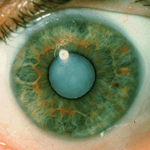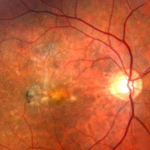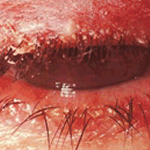Dry eye means that your eyes may not be making enough tears, that the tears which are being produced are of poor quality or that the tears produced evaporate away faster than they should. The normal function of tears is to keep the surface of the eye wet and lubricated, allowing the eyelids to move easily across the eye’s surface, so any shortage of tears or reduction in their quality can produce a gritty, burning sensation of the eyes and can also disturb vision.
The symptoms of dry eye syndrome may include:
Dryness, burning, stinging or itching, gritty feeling, excessive irritation from wind or smoke, blurred or smeary vision, tired eyes, red eyes, excessive watering, sensitivity to light, contact lens discomfort.





